
The Royal Observatory, Greenwich is an observatory situated on a hill in Greenwich Park in south east London, overlooking the River Thames to the north. It played a major role in the history of astronomy and navigation, and because the Prime Meridian passes through it, it gave its name to Greenwich Mean Time, the precursor to today's Coordinated Universal Time (UTC). The ROG has the IAU observatory code of 000, the first in the list. ROG, the National Maritime Museum, the Queen's House and the clipper ship Cutty Sark are collectively designated Royal Museums Greenwich.

Julius Charles Hare was an English theological writer.

James Wyatt was an English architect, a rival of Robert Adam in the neoclassical and neo-Gothic styles. He was elected to the Royal Academy of Arts in 1785 and was its president from 1805 to 1806.

Alton is a civil parish in Wiltshire, England. The parish includes the adjacent villages of Alton Barnes and Alton Priors, and the nearby hamlet of Honeystreet on the Kennet and Avon Canal. It lies in the Vale of Pewsey about 6 miles (10 km) east of Devizes.

Herstmonceux Castle is a brick-built castle, dating from the 15th century, near Herstmonceux, East Sussex, England. It is one of the oldest significant brick buildings still standing in England. The castle was renowned for being one of the first buildings to use that material in England, and was built using bricks taken from the local clay, by builders from Flanders. It dates from 1441. Construction began under the then-owner, Sir Roger Fiennes, and was continued after his death in 1449 by his son, Lord Dacre.
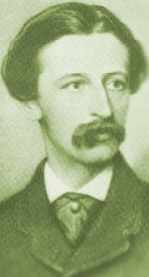
Augustus John Cuthbert Hare was an English writer and raconteur.

Findon is a semi-rural clustered village and civil parish in the Arun District of West Sussex, England, 4 miles (6.4 km) north of Worthing.

Port Way is an ancient road in southern England, which ran from Calleva Atrebatum in a south-westerly direction to Sorbiodunum. Often associated with the Roman Empire, the road may have predated the Roman occupation of Britain.
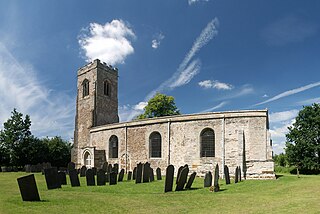
Wistow is a deserted medieval village and civil parish in the Harborough district, in the English county of Leicestershire, and lies seven miles south-east of the city of Leicester in the valley of the River Sence. Since 1 April 1936 it has included most of the former civil parish of Newton Harcourt which was a chapelry of Wistow. The population of the civil parish at the 2011 census was 256.

Blake Hall is a country house within the civil parish of Bobbingworth, to the northwest of Chipping Ongar, in the county Essex, England. It is recorded in the National Heritage List for England as a Grade II* listed building, and its park and garden are Grade II listed.
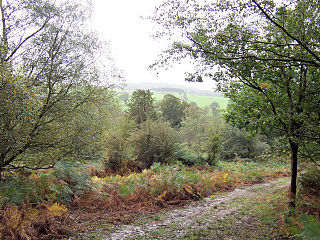
Eridge Park is a village and historic park located north of the parish of Rotherfield, to the north-east of Crowborough in East Sussex, England. The adjoining home of the same name is the seat of the Marquess of Abergavenny. The area is a biological Site of Special Scientific Interest.
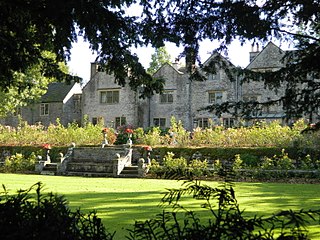
Bradbourne Hall is a country house near All Saint's Church, within the civil parish of Bradbourne, near Ashbourne, Derbyshire. It is a privately owned Grade II* listed building, and is not open to the public.
Francis Hare-Naylor (1753–1815) was an English historian, novelist and playwright. He eloped with the painter Georgiana Hare-Naylor and they had most of their children abroad. They returned to Herstmonceux when his father died. Georgiana died in Lausanne and Hare-Naylor sold Herstmonceux and never returned.
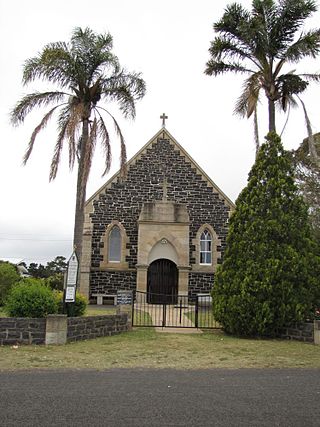
St Matthew's Anglican Church is a heritage-listed church at Beatrice Street, Drayton, once a town but now a suburb of Toowoomba in Toowoomba Region, Queensland, Australia. It was designed by James Marks and built from 1886 to 1887 by Seath, Hobart and Watson. It is also known as St Matthew's Church of England and is the second church of that name in Drayton. It was added to the Queensland Heritage Register on 21 October 1992.
John Sargent (1780–1833) was an English clergyman, academic and biographer. Wealthy by background but a country pastor, he was a prominent Evangelical who came to be regarded by others on his wing of the Church of England as an exemplary cleric. He was also centrally connected, by ties to other major Evangelicals of the time.

Mansion House is a prominent and historically significant Grade II* listed Georgian village property in Hurstpierpoint, West Sussex, England. The substantial family home is situated in the heart of Hurstpierpoint with the High Street at the front and South Downs to the rear. The brick-faced, timber-framed building has surviving medieval sections dating back to the mid- to late 16th century.
Shirley Baptist Church is a Baptist church in Solihull near Birmingham, England. The church building is situated on Stratford Road (A34) with halls facing into Trinity Place in the Parkgate pedestrianised area. The church was founded in 1797 and is a member of the Baptist Union of Great Britain and the Evangelical Alliance.
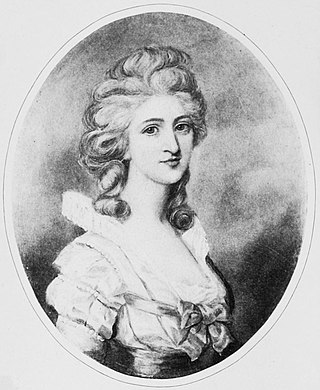
Georgiana Hare-Naylor born Georgiana Shipley was an English painter and art patron.

Worthing Town Hall, or New Town Hall, is a municipal building in Chapel Road, Worthing, West Sussex, England. The town hall, which is a meeting place of Worthing Borough Council, is a Grade II listed building. Located at Chapel Road in the centre of Worthing, it was opened in 1933 and built in a neo-Georgian style to designs by Charles Cowles-Voysey. Containing offices and a Council chamber it replaced Worthing's Old Town Hall as the administrative centre, a building that had been the home of Worthing's local authority from 1835 and was demolished in 1966. To the rear and west lies the Assembly Hall, built in 1935, also to designs by Cowles-Voysey. To the south lies the Worthing Museum and Art Gallery, originally built as a Carnegie Library.
















